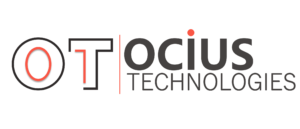With the rapid growth of cloud computing, more businesses are turning to cloud services to host their IT infrastructure. Initializing and optimizing cloud resources can be a complex and time-consuming process. However, with careful consideration and implementation of best practices, businesses can streamline cloud initialization and optimization to ensure efficient cloud operations. In this blog post, we’ll explore the best practices for cloud initialization and optimization.
1. Define Your Cloud Strategy
Before initializing and optimizing cloud resources, businesses should define their cloud strategy. This involves assessing business goals, identifying required cloud services, and determining budgets[1](#user-content-fn-1). Defining cloud strategies can help businesses choose the most suitable cloud providers and services, reducing the likelihood of overprovisioning or under-provisioning resources.
2. Plan Your Cloud Architecture
Effective cloud initialization requires careful planning and design of cloud architecture. Businesses should consider factors such as security, performance, scalability, and availability[2](#user-content-fn-2). Cloud architecture should be structured with scalability in mind, enabling businesses to easily add or remove resources as needed.
3. Automate Provisioning and Deployment
Manual provisioning and deployment of cloud resources can be time-consuming and prone to errors. By automating these processes, businesses can accelerate initialization and optimization and reduce the likelihood of human errors. Infrastructure as code (IaC) tools such as Ansible and Terraform can be used to automate the provisioning and deployment of cloud resources.
4. Monitor Resource Utilization
Monitoring cloud resources utilization can help businesses optimize resource allocation and identify underutilized resources[3](#user-content-fn-3). Cloud monitoring tools such as Nagios, Datadog, or New Relic can aid in identifying performance bottlenecks, predicting capacity, tracking resource costs, and managing cloud spending.
5. Leverage Cloud Cost Optimization Strategies
Cloud cost optimization strategies can help businesses to reduce cloud expenses by eliminating idle resources and right-sizing resources. It involves techniques such as reserved instances, on-demand instances, spot instances, auto-scaling, and containerization[4](#user-content-fn-4). These techniques can help businesses optimize cloud costs and improve scalability.
6. Implement Best Cloud Security Practices
Implementing the best cloud security practices is essential for protecting cloud resources. Businesses should follow the shared responsibility model of security[5](#user-content-fn-5). Cloud providers offer security tools and services that can be leveraged to enhance cloud security. Some of these services include identity and access management (IAM), encryption, and network security.
In conclusion, effective cloud initialization and optimization require careful planning, architecture, and implementation. By following best practices such as defining a cloud strategy, automating provisioning and deployment, monitoring resource utilization, leveraging cost optimization strategies, and implementing cloud security practices, businesses can streamline cloud operations and optimize cloud performance. By utilizing these practices, businesses can ensure their cloud resources remain efficient, secure, and cost-effective.






